Foundation Repair: A Comprehensive Guide
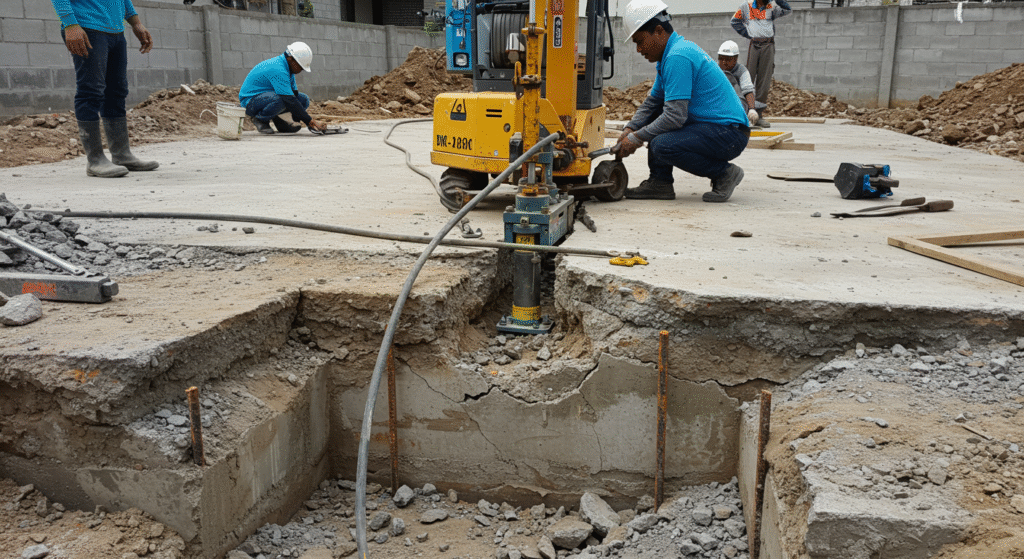
Foundation Repair
Table of Contents
- Introduction to Foundation Repair
- 1.1. What is Foundation Repair?
- 1.2. Importance of a Strong Foundation
- 1.3. Brief History of Foundation Repair
- Common Causes of Foundation Damage
- 2.1. Soil-Related Issues
- 2.2. Settlement and Shifting
- 2.3. Water Damage and Flooding
- 2.4. Poor Construction Practices
- 2.5. Natural Disasters
- Signs of Foundation Damage
- 3.1. Cracks in Walls and Floors
- 3.2. Doors and Windows Malfunctioning
- 3.3. Uneven Floors and Sagging
- 3.4. Gaps Around Doors and Windows
- 3.5. Bowed or Leaning Walls
- Types of Foundation Repair Methods
- 4.1. Slabjacking
- 4.2. Piering
- 4.3. Wall Anchors
- 4.4. Epoxy Injection
- 4.5. Carbon Fiber Repair
- Preventive Measures for Foundation Damage
- 5.1. Proper Drainage Systems
- 5.2. Maintaining Soil Moisture
- 5.3. Regular Inspections
- 5.4. Quality Construction Practices
- 5.5. Landscaping Considerations
- Case Studies in Foundation Repair
- 6.1. Residential Foundation Repair: A Case Study
- 6.2. Commercial Building Foundation Rehabilitation
- 6.3. Historical Building Restoration
- 6.4. Lessons Learned from Challenging Repairs
- Challenges and Considerations in Foundation Repair
- 7.1. Cost Implications
- 7.2. Technical and Logistical Challenges
- 7.3. Environmental Factors
- 7.4. Regulatory and Permitting Issues
- 7.5. Hiring Qualified Professionals
- Future Trends in Foundation Repair
- 8.1. Advanced Materials and Technologies
- 8.2. Innovative Repair Techniques
- 8.3. Sustainability in Repair Methods
- 8.4. Integration of Smart Technologies
- 8.5. Globalization of Repair Practices
- Conclusion
- 9.1. Summary of Key Points
- 9.2. The Importance of Proactive Foundation Maintenance
- 9.3. Encouragement for Homeowners and Builders
- 9.4. The Future Outlook of Foundation Repair
1. Introduction to Foundation Repair
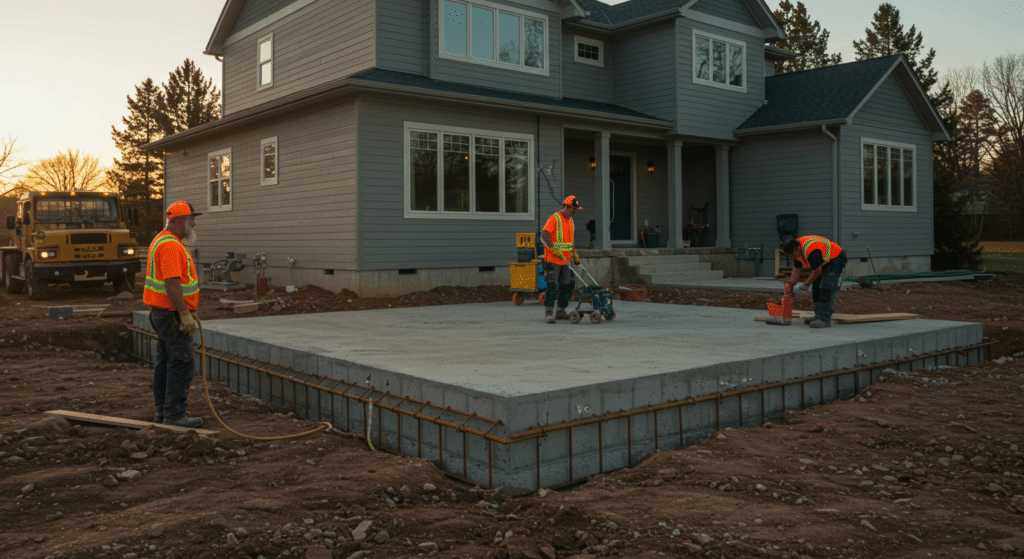
Foundation repair
1.1. What is Foundation Repair?
Foundation repair refers to the process of identifying and fixing issues in a building’s foundation. It is essential for maintaining the structural integrity and stability of a building, ensuring the safety of its occupants.
1.2. Importance of a Strong Foundation
A strong foundation is crucial as it supports the entire weight of the building, transferring the load to the ground. Any damage to the foundation can lead to severe structural problems, potentially resulting in instability or collapse.
1.3. Brief History of Foundation Repair
The need for foundation repair dates back to ancient times, with early civilizations encountering structural issues in their buildings. Over the centuries, repair techniques have evolved, incorporating new materials and technologies to address foundation damage effectively.
2. Common Causes of Foundation Damage
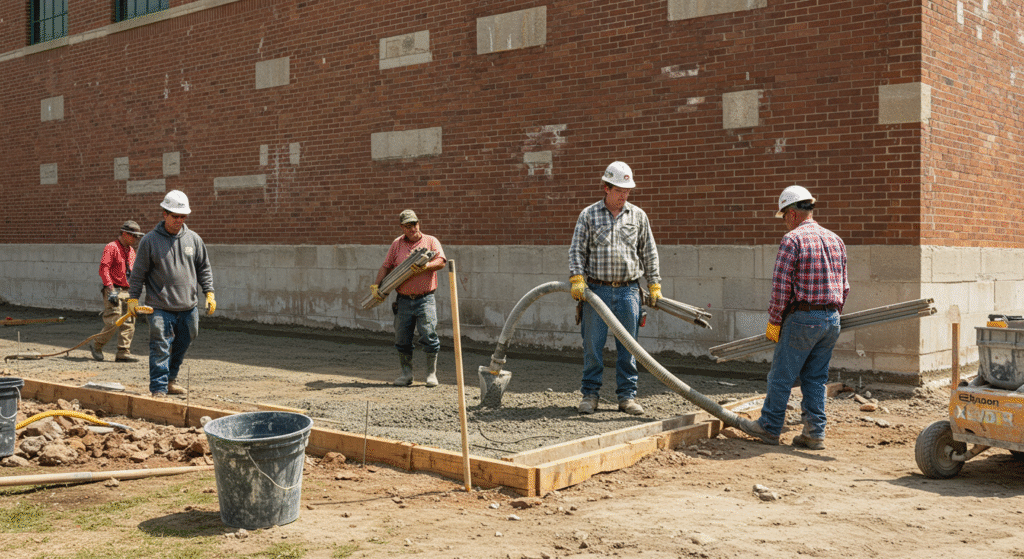
2.1. Soil-Related Issues
Soil-related problems, such as expansive soils that swell with water, can exert pressure on the foundation, leading to damage. Poor soil compaction during construction can also result in uneven settling.
2.2. Settlement and Shifting
Settlement occurs when the soil beneath the foundation shifts or settles unevenly, causing the foundation to move and potentially crack. This can happen due to natural soil settling or external factors like nearby construction.
2.3. Water Damage and Flooding
Water infiltration can weaken the foundation by eroding the soil beneath it or causing cracks in the concrete. Flooding can exacerbate these issues, leading to more severe damage.
2.4. Poor Construction Practices
Inadequate construction practices, such as insufficient footings or poor concrete mixing, can lead to a weak foundation prone to damage. Cutting corners during construction can result in long-term structural problems.
2.5. Natural Disasters
Earthquakes, floods, and other natural disasters can cause significant stress on a foundation, leading to cracks and instability. These events often reveal underlying weaknesses in the foundation.
3. Signs of Foundation Damage
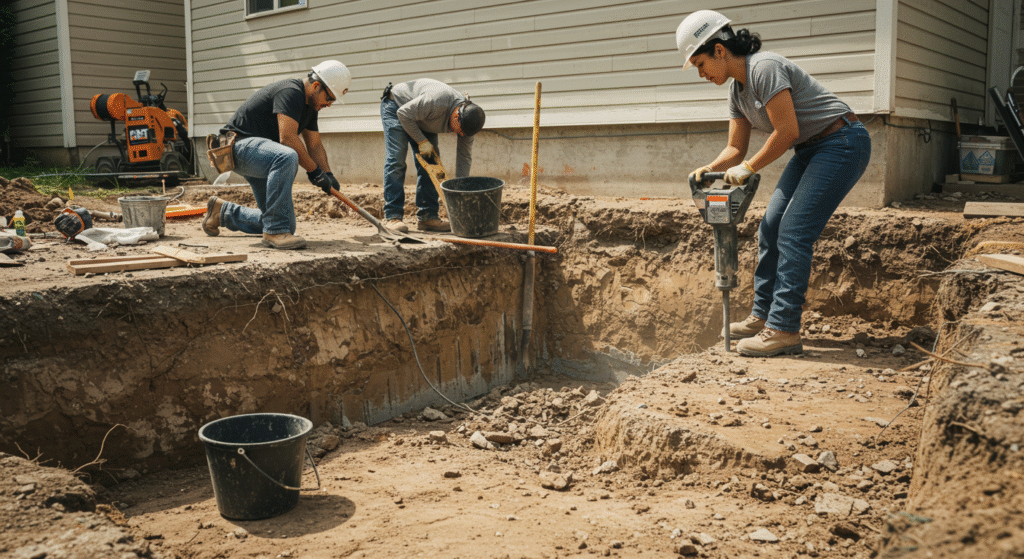
3.1. Cracks in Walls and Floors
Cracks in walls and floors are common indicators of foundation damage. These cracks can be hairline or more significant, depending on the extent of the issue.
3.2. Doors and Windows Malfunctioning
Doors and windows that stick, do not close properly, or have gaps around them can signal foundation problems. This is often due to the house settling unevenly.
3.3. Uneven Floors and Sagging
Noticeably uneven floors or sagging areas can indicate that the foundation is shifting or settling unevenly, putting stress on the structure.
3.4. Gaps Around Doors and Windows
Gaps around doors and windows can develop as the foundation shifts, allowing air leaks and potentially indicating more serious structural issues.
3.5. Bowed or Leaning Walls
Walls that bow inward or lean outward can be a sign of serious foundation damage, often caused by soil pressure or shifting.
4. Types of Foundation Repair Methods

4.1. Slabjacking
Slabjacking involves filling gaps beneath a concrete slab with a specialized mixture to lift and stabilize it. This method is effective for addressing uneven settling.
4.2. Piering
Piering uses deep foundation elements like steel piers to transfer the weight of the building to more stable soil layers. This method is suitable for severe foundation damage.
4.3. Wall Anchors
Wall anchors are used to stabilize bowing or leaning walls by anchoring them to a stable external structure, providing lateral support.
4.4. Epoxy Injection
Epoxy injection involves sealing cracks in concrete with a strong epoxy resin, restoring the structural integrity of the foundation.
4.5. Carbon Fiber Repair
Carbon fiber strips or staples can be used to reinforce damaged areas of the foundation, providing additional strength and stability.
5. Preventive Measures for Foundation Damage

5.1. Proper Drainage Systems
Ensuring that water drains away from the foundation can prevent erosion and water infiltration. This includes maintaining gutters and downspouts.
5.2. Maintaining Soil Moisture
Keeping the soil around the foundation consistently moist can prevent shrinking and swelling, reducing the risk of uneven settling.
5.3. Regular Inspections
Regular inspections by a professional can identify potential issues early, allowing for timely repairs and preventing more severe damage.
5.4. Quality Construction Practices
Ensuring that construction is done with high-quality materials and techniques can prevent foundation problems from arising in the future.
5.5. Landscaping Considerations
Landscaping should be designed to direct water away from the foundation and prevent soil erosion, reducing the risk of foundation damage.
6. Case Studies in Foundation Repair

6.1. Residential Foundation Repair: A Case Study
A detailed look at a residential foundation repair project, highlighting the problem identified, the repair method used, and the successful outcome.
6.2. Commercial Building Foundation Rehabilitation
An examination of a commercial building’s foundation repair, showcasing the challenges faced and the solutions implemented to ensure the building’s structural integrity.
6.3. Historical Building Restoration
A case study of a historical building’s foundation repair, emphasizing the need to preserve the structure’s historical integrity while addressing critical foundation issues.
6.4. Lessons Learned from Challenging Repairs
Insights and takeaways from particularly challenging foundation repair projects, providing guidance for future endeavors.
7. Challenges and Considerations in Foundation Repair

7.1. Cost Implications
Foundation repair can be costly, with expenses varying depending on the severity of the damage and the repair method chosen. Budgeting and financial planning are essential.
7.2. Technical and Logistical Challenges
Complex repair projects may require specialized skills, equipment, and logistics, adding to the complexity and duration of the repair process.
7.3. Environmental Factors
Environmental conditions, such as weather and soil composition, can impact the effectiveness and feasibility of certain repair methods.
7.4. Regulatory and Permitting Issues
Depending on the location and type of repair, obtaining necessary permits and complying with local regulations can add time and cost to the project.
7.5. Hiring Qualified Professionals
The success of a foundation repair project often depends on the expertise of the professionals involved. It is crucial to hire qualified contractors with a proven track record.
8. Future Trends in Foundation Repair

8.1. Advanced Materials and Technologies
The development of advanced materials and technologies, such as self-healing concrete, could revolutionize foundation repair, offering more durable and sustainable solutions.
8.2. Innovative Repair Techniques
Emerging repair techniques, such as grouting and micro-piling, provide more efficient and less invasive methods for addressing foundation damage.
8.3. Sustainability in Repair Methods
There is a growing emphasis on sustainable repair methods that minimize environmental impact, using eco-friendly materials and practices.
8.4. Integration of Smart Technologies
The use of smart technologies, such as sensors and monitoring systems, can enhance the effectiveness of foundation repair by providing real-time data and early detection of issues.
8.5. Globalization of Repair Practices
The sharing of knowledge and techniques across borders can lead to more standardized and effective foundation repair practices worldwide.
9. Conclusion
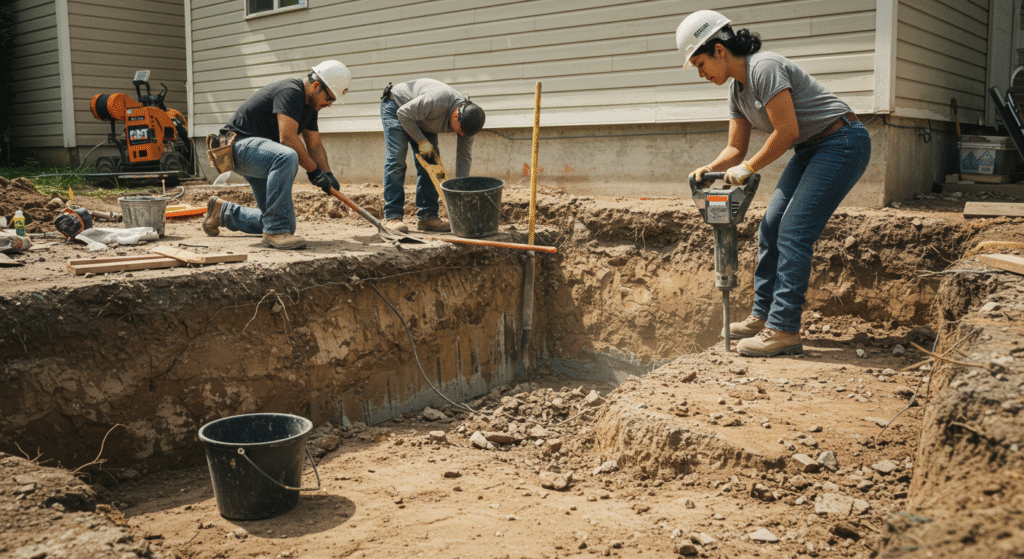
9.1. Summary of Key Points
Foundation repair is a critical process that ensures the structural integrity and safety of buildings. Understanding the causes of foundation damage, recognizing the signs, and employing effective repair methods are essential for maintaining a stable and secure structure.
9.2. The Importance of Proactive Foundation Maintenance
Proactive maintenance and regular inspections can prevent minor issues from developing into major problems, saving time and money in the long run.
9.3. Encouragement for Homeowners and Builders
For homeowners and builders, being informed and vigilant about foundation health is crucial. Addressing foundation issues promptly can prevent costly repairs and ensure the longevity of a building.
9.4. The Future Outlook of Foundation Repair
As technology advances and new methods emerge, the future of foundation repair looks promising. With a focus on sustainability and innovation, the industry is poised to address foundation damage more effectively than ever before.
This comprehensive guide provides a thorough understanding of foundation repair, from identifying common causes and signs of damage to exploring various repair methods and preventive measures. By staying informed and proactive, individuals can ensure the stability and longevity of their buildings.
Pingback: The Role of a General Contractor
Pingback: Construction Cost Estimation: A Comprehensive Guide